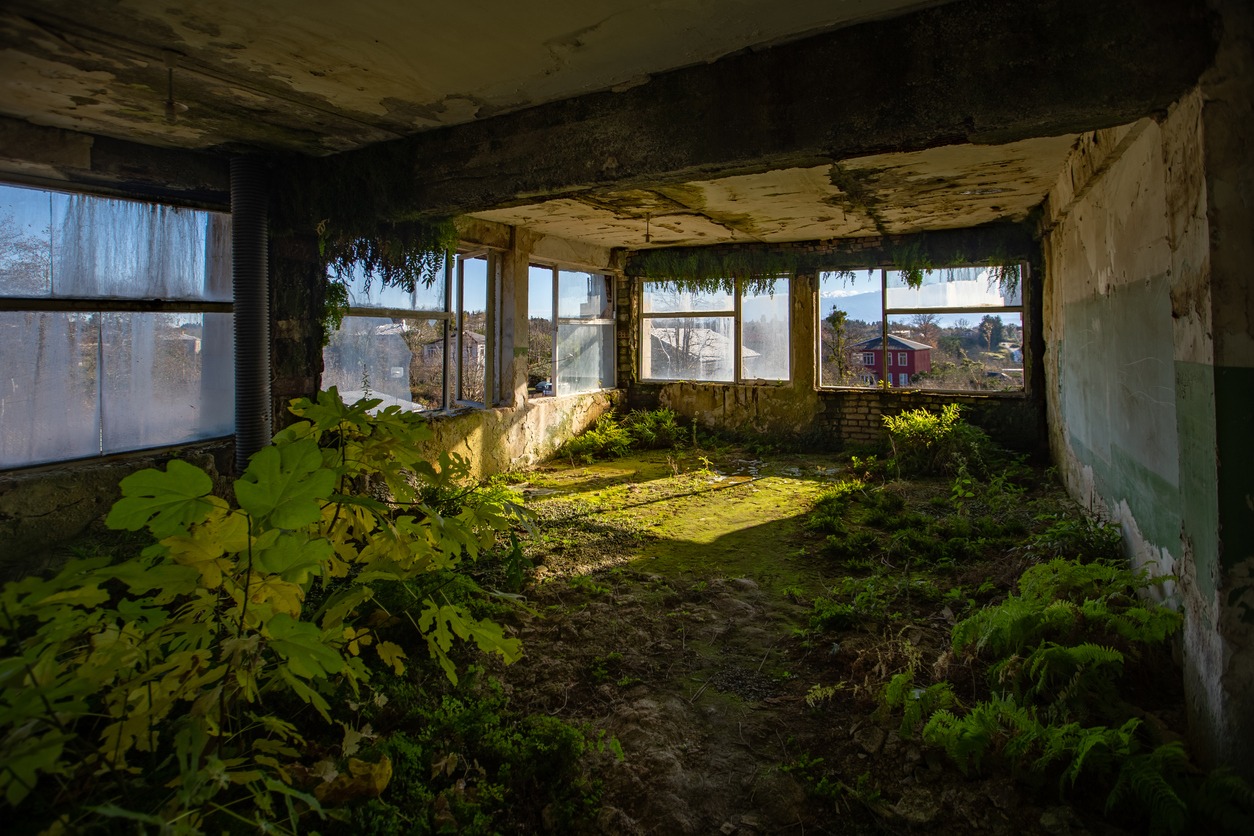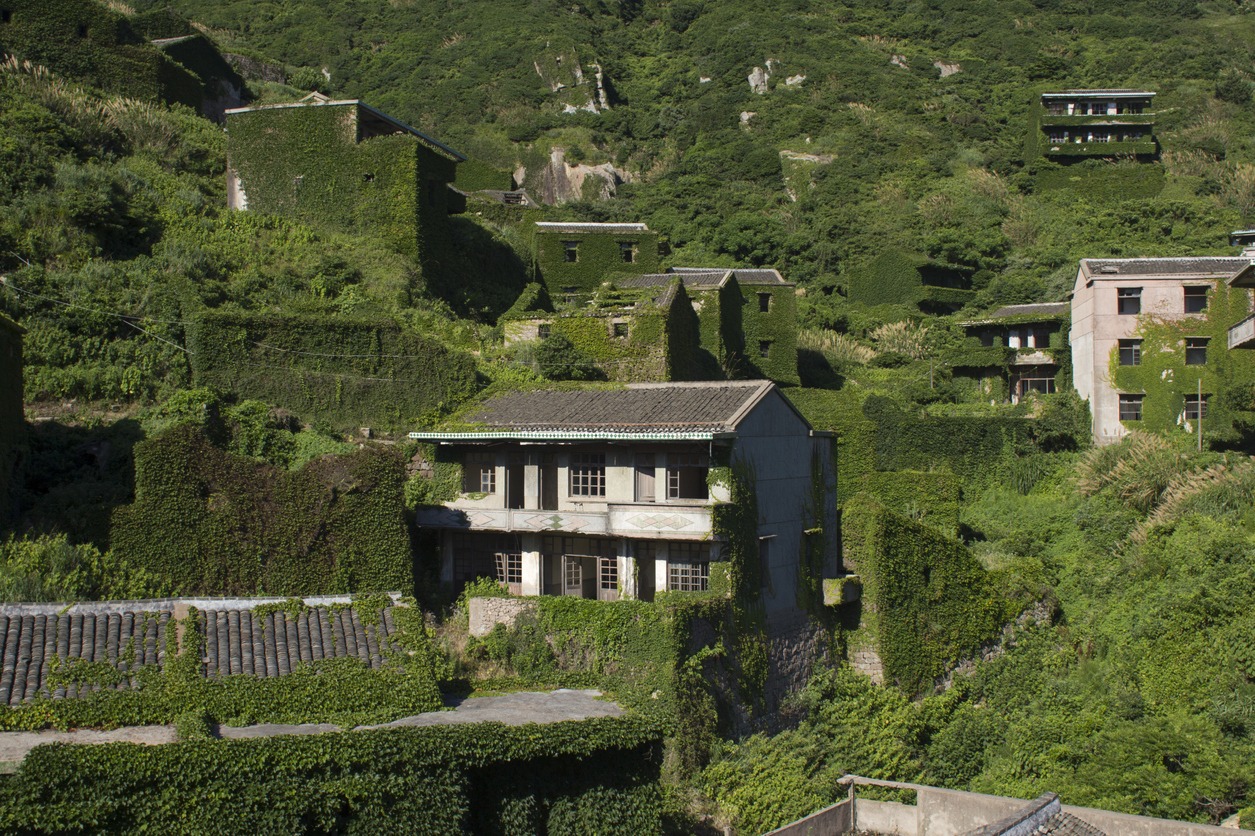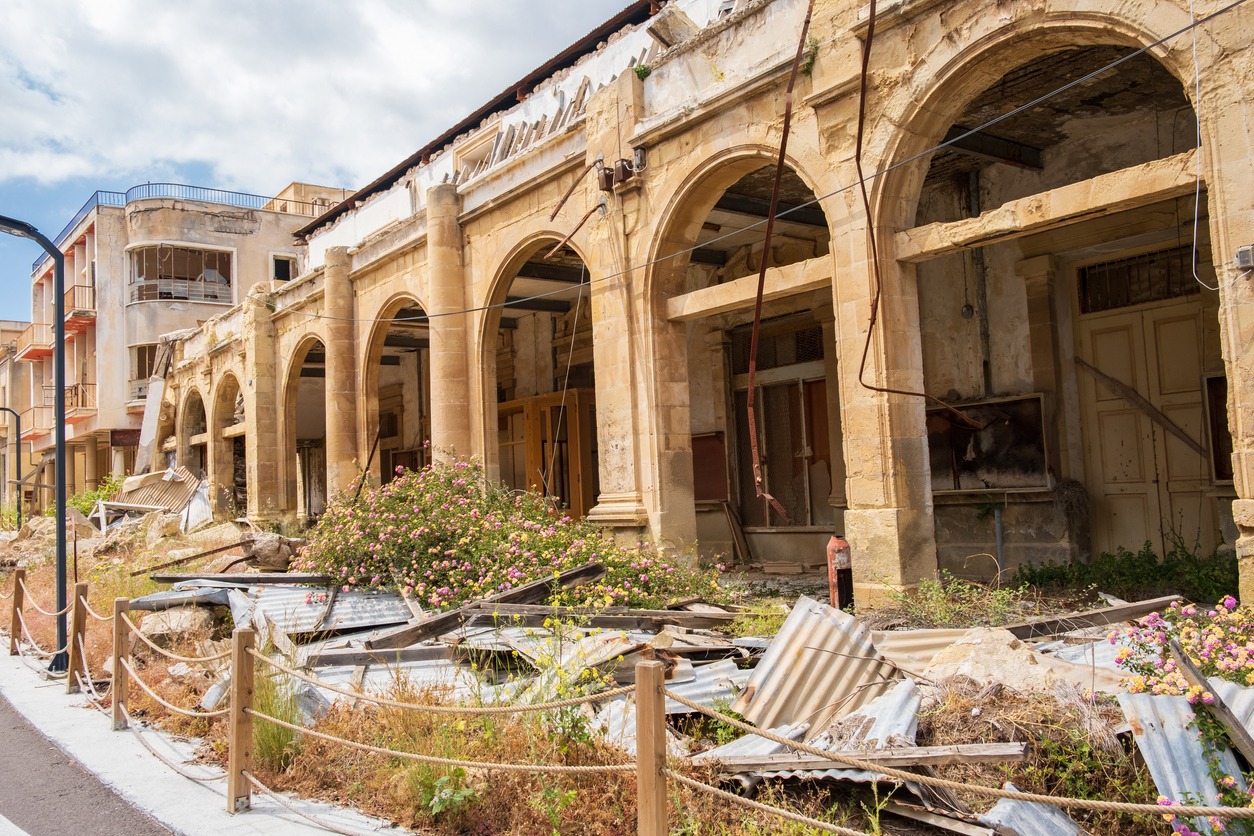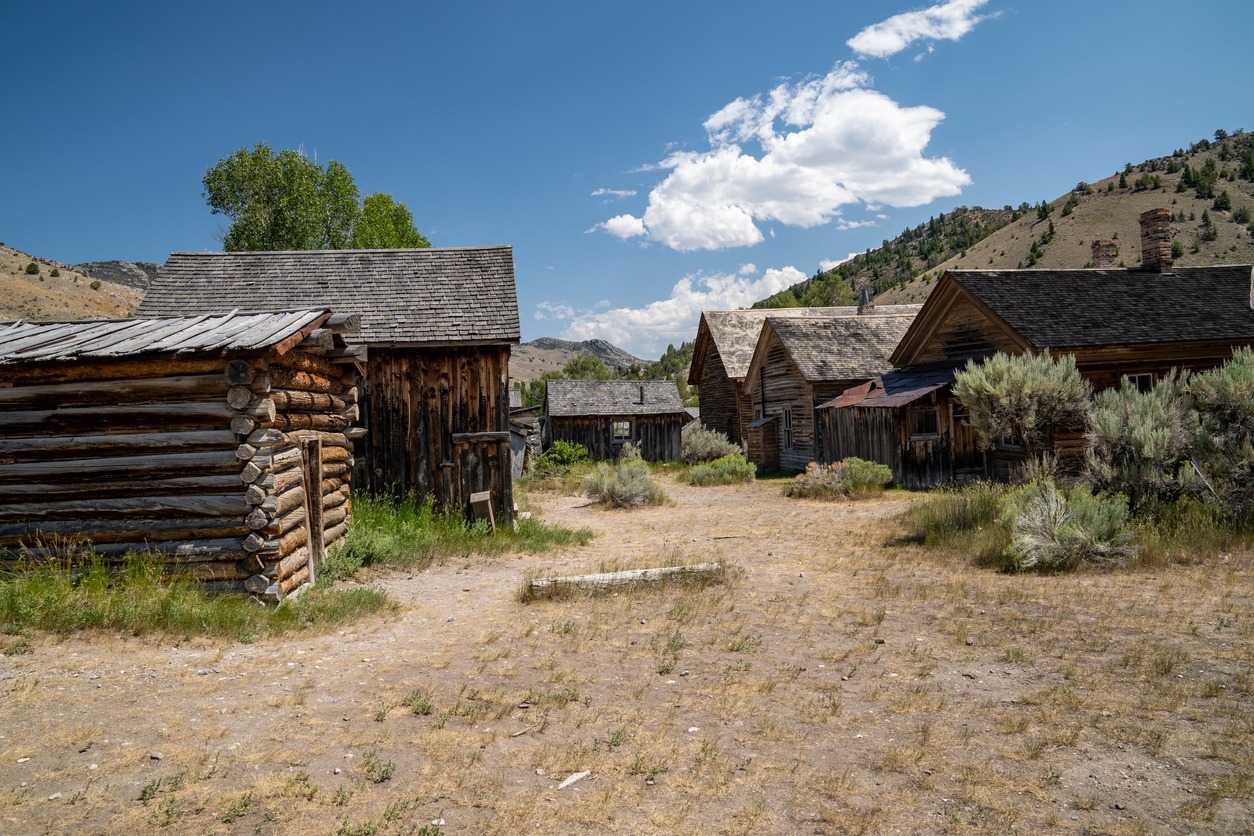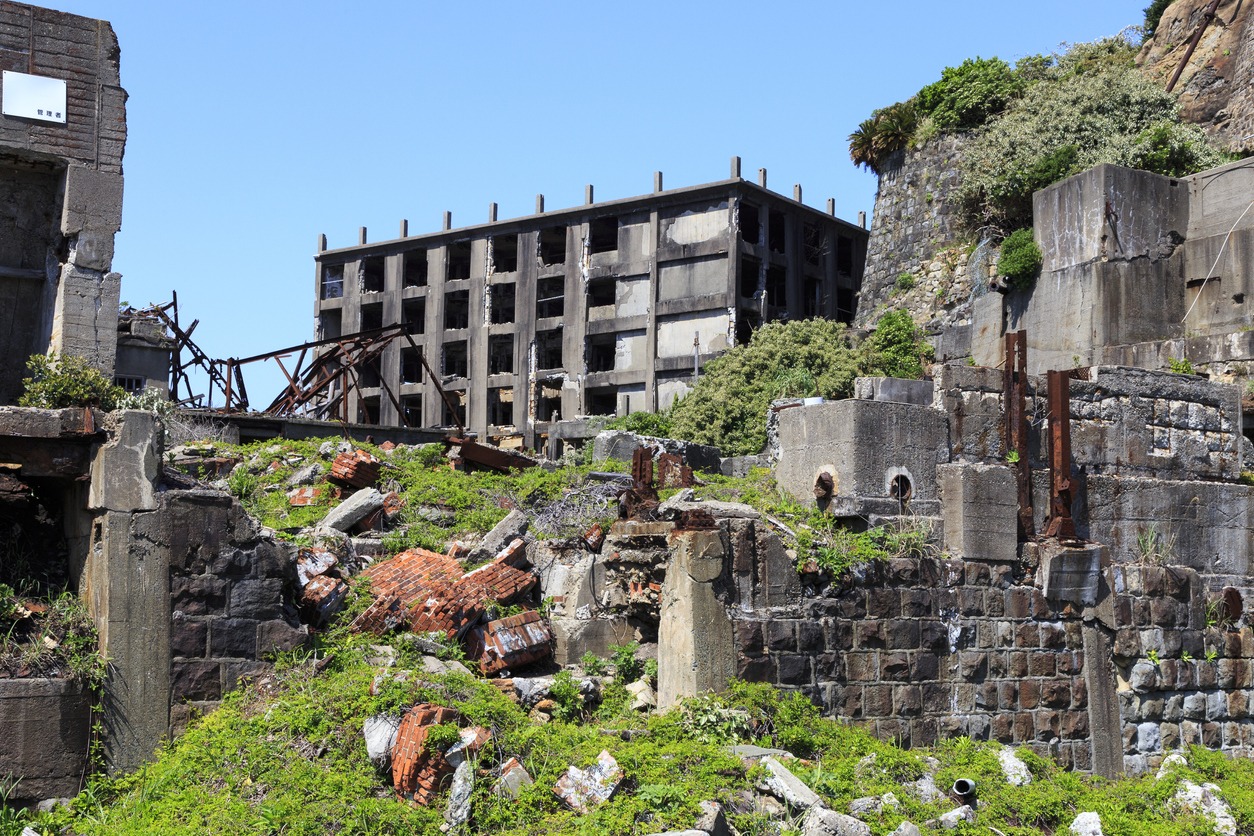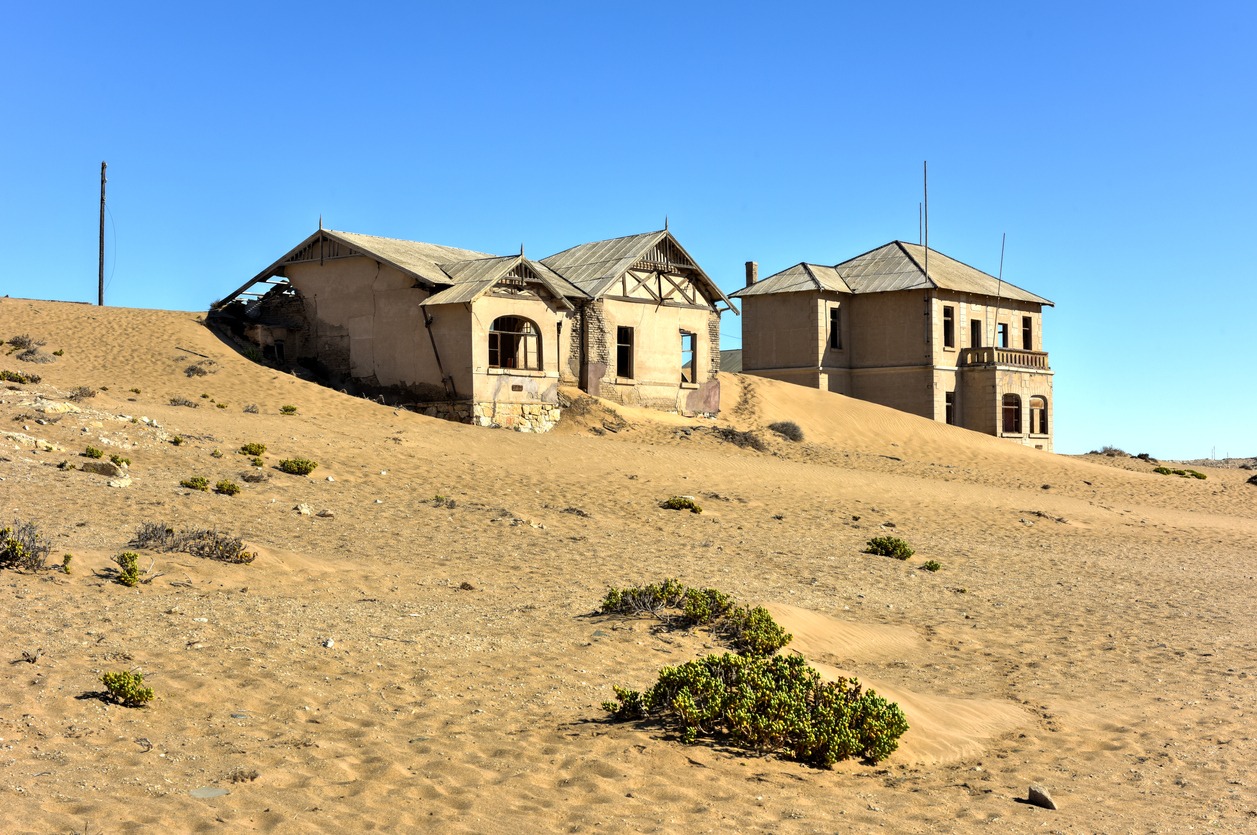In our fast-paced world, it’s easy to forget the places that time has left behind. In this article, we will explore the fascinating intersection where human-made structures and the relentless force of nature meet. We will look into various locations around the world that were once bustling with activity but are now silent, with nature slowly creeping in to reclaim its territory. From deserted buildings to forgotten towns, these places offer a unique glimpse into a world where human footprints are gradually erased by natural forces.
As we journey through these abandoned places, we’ll see how nature has a way of painting these forgotten landscapes with a new kind of beauty. Trees sprouting through floors, vines covering walls, and wildlife making homes in unexpected places – these are just a few of the sights that await. Join us as we uncover the quiet yet powerful transformation of these abandoned places by nature’s hand.
Oradour-sur-Glane, France
Oradour-sur-Glane, a small village in France, witnessed a tragic event during World War II. On June 10, 1944, German troops entered the village and carried out a massacre, killing 642 residents, including women and children. This brutal act was a response to the activities of the French Resistance in the area. The soldiers destroyed the village, leaving it in ruins, as a grim reminder of the war’s atrocities.
In the years following the war, the French government made a decision to preserve the remains of Oradour-sur-Glane as a memorial to those who lost their lives. The site remains untouched since the day of the massacre, serving as a stark reminder of the horrors of war.
Visitors can walk through the silent streets of the village, seeing the remnants of buildings, cars, and personal belongings left as they were in 1944. This somber site stands as a powerful symbol of peace and a reminder of the tragic consequences of conflict.
Houtouwan, China
Houtouwan is a small, abandoned fishing village located on Shengshan Island, part of the Shengsi archipelago off the eastern coast of China. Established in the 1950s, the village thrived for decades, with its residents primarily engaged in fishing.
However, in the 1990s, Houtouwan faced a decline due to its remote location and difficulties associated with accessing the mainland for education and economic opportunities. This led to a gradual exodus of its population, leaving the village largely deserted by the early 21st century.
Since its abandonment, Houtouwan has become known for the striking way in which nature has reclaimed it. The once-bustling village is now engulfed in a lush blanket of greenery. Vines and plants have overtaken the empty homes and buildings, creating a unique and surreal landscape.
This natural transformation has turned Houtouwan into a curious and popular destination for photographers and tourists, drawn by the picturesque and unusual scenery of a village lost in time and embraced by nature.
Varosha, Cyprus
Varosha, once a bustling and popular tourist district in Famagusta, Cyprus, has a story marked by conflict and abandonment. Before 1974, it was a thriving area known for its beautiful beaches and luxury hotels, attracting celebrities and tourists from around the world. However, the landscape of Varosha dramatically changed with the Turkish invasion of Cyprus in July 1974. As the Turkish forces advanced, the entire population of Varosha fled, expecting a swift return once the situation settled. This return, however, never materialized.
Since then, Varosha has remained a ghost town, cordoned off by the Turkish military and left to the elements. The once luxurious hotels and apartment buildings now stand empty and decaying, with personal belongings and remnants of its past life still visible. Streets that were once filled with the hustle and bustle of tourist activity are now silent, with nature slowly creeping in.
The area has become a symbol of the Cyprus conflict, representing the complexities and lasting impacts of political disputes. Despite various political discussions and plans, Varosha remains uninhabited and largely untouched, a frozen slice of history on the Mediterranean coast.
Bannack, Montana, USA
Bannack, Montana, established in 1862, is a well-known ghost town that played a significant role in the early history of the Montana Territory. It emerged as a result of a major gold discovery along Grasshopper Creek, attracting hundreds of prospectors and settlers in search of fortune. Bannack briefly served as the first territorial capital of Montana. The town experienced a rapid growth in population and infrastructure, but as gold reserves dwindled and easier pickings were found elsewhere, the town’s population began to decline.
By the 20th century, Bannack had transformed into a ghost town, with many residents moving on to more prosperous areas. Despite its decline, over 60 structures remained, ranging from log cabins to frame houses to a brick courthouse. In 1954, Bannack was designated a State Park, and since then, efforts have been made to preserve its historic structures.
Today, it stands as a significant cultural heritage site, offering visitors a glimpse into the life of a 19th-century mining town. Bannack is celebrated for its historical value and is often the site of reenactments and festivals that pay homage to its rich and varied past.
Maunsell Sea Forts, United Kingdom
The Maunsell Sea Forts, located in the Thames and Mersey estuaries in the United Kingdom, were constructed during World War II as part of Britain’s coastal defense strategy. Named after their designer, Guy Maunsell, these forts were built in the early 1940s to protect the United Kingdom from potential air or naval attacks, particularly from German forces. The forts were strategically positioned to intercept aircraft and provide anti-aircraft fire. They played a vital role in Britain’s defense, acting as early warning systems and deterring enemy raids.
After the war, the forts were decommissioned and eventually abandoned by the mid-1950s. Over the years, these imposing structures, built on stilts rising from the sea bed, have been left to the mercy of the elements. Despite their state of disrepair and the ravages of time and weather, the Maunsell Forts remain iconic figures on the British seascape.
Today, they are popular subjects of interest for historians, military enthusiasts, and even adventurous tourists. Their stark, rusting silhouettes against the backdrop of the sea serve as a reminder of a crucial period in Britain’s wartime history.
Gunkanjima (Battleship Island), Japan
Gunkanjima, also known as Hashima Island or Battleship Island, is a small, uninhabited island situated off the coast of Nagasaki in southern Japan. The island gained its nickname ‘Battleship Island’ due to its resemblance to a military warship.
Its story began in the late 19th century when coal was discovered there. The Mitsubishi Corporation bought the island in 1890 and began a massive undersea mining operation. Concrete apartment blocks were constructed to accommodate the workers, making Gunkanjima one of the most densely populated places in the world at its peak.
The island’s fortunes changed in 1974 when the coal mine was closed due to the shift from coal to petroleum. This led to the rapid departure of all the residents, leaving the island abandoned. Since then, Gunkanjima has been left to the elements; its once bustling apartment blocks and facilities are now crumbling and overgrown.
The island’s isolation and the haunting appearance of its decayed structures have made it a site of intrigue and curiosity. In recent years, Gunkanjima has gained international attention and was even inscribed as a UNESCO World Heritage Site in 2015, recognized for its historical significance as part of Japan’s industrialization.
Kolmanskop, Namibia
Kolmanskop, located in the Namib Desert in Namibia, is a ghost town that emerged during the early 20th-century diamond rush. In 1908, a railway worker found a diamond in the area, which led to a frenzied influx of German prospectors. This discovery transformed the barren desert into a thriving mining village, complete with a hospital, ballroom, power station, school, and the first tram in Africa. Kolmanskop was a symbol of luxury and wealth, boasting opulent houses and modern amenities that were rare in that era, especially in such a remote location.
However, the town’s prosperity was short-lived. After World War I, diamond prices dropped, and richer diamond deposits were discovered further south. By the 1950s, the town was completely abandoned, leaving the elegant buildings to the mercy of the desert. Over time, the shifting sands of the Namib have been reclaiming Kolmanskop, filling the houses and streets with dunes.
Today, it stands as a surreal and haunting testament to the transient nature of boomtowns. The site is now a popular destination for photographers and tourists, drawn by the stark beauty of its partially sand-filled, decaying structures set against the harsh desert backdrop.
Conclusion
These abandoned places, each with their unique histories and circumstances, offer a glimpse into different periods and aspects of human life. From towns deserted due to economic shifts, like Kolmanskop, to places abandoned following tragedies or conflict, like Oradour-sur-Glane, each site tells a story. They remind us of the ever-changing nature of human settlements and the impact of historical events on communities.
Visiting or learning about these locations provides us with a chance to reflect on the past and contemplate the impermanence of human endeavors. These places, now silent, reclaimed by nature, and devoid of their original bustle, stand as open-air museums of sorts, offering lessons in history and a perspective on the resilience and adaptability of nature and communities alike. They serve as tangible links to events and eras that have shaped our world, reminding us of the constant evolution of human society.

